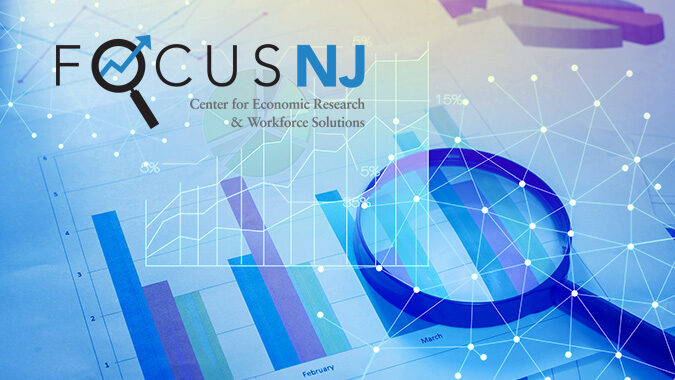Focus NJ has finalized its 2021 Economic Review, chronicling the unique challenges New Jersey faced in the latter stages of the COVID-19 pandemic.
Among the key data found within the latest interactive report:
- Unemployment in New Jersey remained stubbornly high throughout the year compared to the national rate, although it fell far below the record highs set in 2020.
- New Jersey’s Gross Domestic Product surpassed pre-pandemic levels in the first quarter of 2021 for the first time since COVID-19 emerged. GDP growth was faster than the national rate in three out of four quarters, but the state’s overall annual GDP growth rate trailed that of the U.S.
- The number of New Jersey workers quitting their job peaked in August of 2021. But the state’s “quit rate” did not consistently reach as high as the national rate.
- The number of small businesses open in the state remained far below pre-pandemic levels, even as the economy seemed to rebound.
“This review represents an interesting snapshot of New Jersey’s economy at a time when there was a still a lingering hangover from the worst of the pandemic, with some stability beginning to take shape,” said Focus NJ Executive Director Kyle Sullender.
“That said, it’s clear to see that New Jersey had a bigger hill to climb in areas like employment and number of small businesses open as it headed into this year.”
Interestingly, New Jersey’s total labor force, which includes employed workers as well as those seeking employment, peaked at 4.7 million in June 2021 – before shrinking to 4.63 million from July to December.
The state’s labor force participation rate also ended 2021 at 62.6%, which was slightly lower than where it started the year (62.9%).
Unemployment in New Jersey fell steadily throughout 2021. In January, there were 339,496 unemployed workers. But by December, that number dropped nearly 30% to 234,108 workers.
Still, New Jersey finished 2021 with an unemployment rate of 5.1%, higher than the national rate of 3.9% at the end of the year.
New Jersey also saw more workers quit their jobs in 2021 than in any previous year on record – although its “quit rate” peaked at 2.7% in August of 2021, which was below the national peak of 3.0% in December.
Total state level personal income increased by a whopping 41.9% from Q4 of 2020 to Q1 of 2021 – the dramatic rise closely linked to federal and state stimulus efforts in response to the pandemic.
That large increase, however, was not sustained as income fell about 17% in Q2 of 2021 and remained relatively stable for the remainder of the year in the absence of additional stimulus.
New Jersey’s GDP experienced annualized quarterly growth in excess of 7% in both Q1 and Q4 of 2021. It’s worth noting, however, that the state’s GDP growth decreased at an annual rate of 2.2% in the first quarter of 2022, as announced last week.
As of the final week of 2021, the number of small businesses open in New Jersey was 8.77% lower than in January 2020. Yet, small business revenue in New Jersey was 31.5% higher than it had been in January 2020.
“Those findings would seem contrary,” Sullender said. “But it suggests that many small businesses did not survive the pandemic’s economic shocks, while those that did reaped the benefits of high consumer demand.”
To see Focus NJ’s 2021 Economic Review, with complete data and interactive charts on New Jersey’s labor force, overall employment and employment by industry, unemployment, personal and per capita income, GDP overall and by industry, consumer spending and small businesses open, click here.
Focus NJ acknowledges and thanks Bank of America for helping to make this research possible through its support of the Bank of America Fellowship Program.
Focus NJ – the Center for Economic Research and Workforce Solutions – is a nonpartisan, nonprofit research foundation launched by the New Jersey Business & Industry Association in February 2020. It provides deep analysis of public policies, industry trends and economic indicators that impact New Jersey’s overall affordability, workforce and competitiveness.

